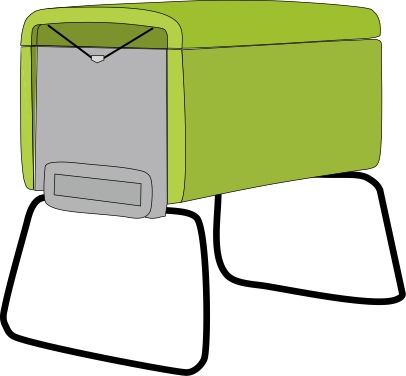Beehaus
The Beehaus is based on the same principles as the Dartington hive system but the boxes are manufactured using plastic materials. They are ideal for keeping bees in gardens or on rooftops.
The Beehaus hive system comes complete with all the equipment required to start beekeeping, including four honey boxes, integral mesh floor and varroa inspection tray.
The brood box has entrances at either end and there is enough space to house twenty two 14 x 12 brood frames.
| HIVE DATA | NATIONAL 14×12 | DARTINGTON | BEEHAUS |
|---|---|---|---|
| Brood frame | 14″ x 12″ | 14″ x 12″ | 14″ x 12″ |
| Super frame | 14″ x 5½” | 14″ x 5½” | 14″ x 5½” |
| Frames / brood box | 11 | 21 | 22 |
| Cells / brood box | 80,000 | 80,000 | 80,000 |
| Lug length | 1½” | 1½” | 1½” |
As with the Dartington hive the colony can be allowed to expand horizontally in the Beehaus and store honey in 14 x 12 frames (ensure your extractor will take this size!). Alternatively the brood chamber can be divided in two to house a second colony such as may be produced during swarm control. After the new queen starts to lay the two colonies can easily be recombined if desired.
Because the bees are on 14” x 12” brood frames (also called Deep Nationals) it should be possible to house a prolific colony on 11 frames i.e. half of the hive. In this case honey storage is provided by the honey boxes being housed above the brood box. Each box is half the size of a National super (and half the weight) and uses National shallow frames.

The Beehaus has a stainless steel entrance block, for temporarily closing the hive, and a wasp guard that enables the bees to defend their valuable winter stores during the autumn.
The lid and honey boxes are securely held in place by a strong cord which is easily hooked in place at each end of the hive.
The inspection tray is located under the mesh floor of the hive. As with most hives the tray can be removed to allow mites to fall to the ground as part of integrated pest management, or the tray may be inserted to make a count of average daily mite drop for varroa monitoring.
We understand that www.omlet.co.uk no longer make these hives, but you may come across a second hand one, which should last for many years.